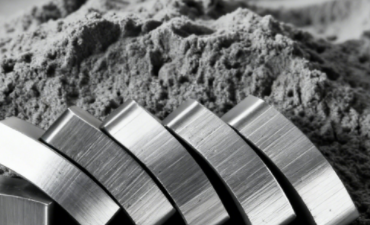When a diamond saw blade segment"blunts", it means the diamond particles in the blade lose their sharpness or cutting capacity during cutting or grinding. This issue leads to reduced cutting efficiency, excessive heat buildup, and in severe cases, even makes continued cutting impossible.
Saw blade segment blunting typically occurs in four main scenarios:
1. Diamond particles become rounded. Their sharp edges and corners get worn down, stripping the blade of its cutting sharpness.
2. Diamond particles are enclosed by the metal matrix. The diamond particles on the blade’s surface fail to be exposed when needed.
3. The matrix is overly hard. This prevents diamond particles from falling off and being replaced, so new sharp diamonds can’t be exposed.
4. The matrix is too soft. Diamond particles fall off too rapidly, resulting in low utilization—yet the blade’s surface can still feel "blunt".

Several factors contribute to saw blade blunting:
* Improper selection of matrix material. The hardness of the matrix doesn’t match the material being processed.
* Low diamond concentration. During cutting, individual diamond particles bear too much load, making them easy to round off.
* Inadequate cooling for the saw blade. Excess heat causes diamond graphitization or surface damage.
* Unreasonable processing parameters. Deviations in linear speed, feed rate, or load make the blade "slip" rather than perform proper cutting.
So, how to resolve saw blade blunting?
First, optimize the matrix formula:
For cutting hard materials (e.g., granite, ceramics), choose a matrix that offers both a rigid structural framework and quick cutting edge exposure. This ensures diamonds work effectively while maintaining continuous edge exposure.
For cutting soft materials (e.g., limestone, concrete), opt for a harder matrix to avoid premature diamond loss.
Take our iron-copper-zinc SUZ-06 as an example. As a core powder, it forms a fine-grained matrix with strong holding power during sintering. Additionally, the processed surface gains a sandy texture, which significantly boosts sharpness and prevents the matrix from blunting.
Second, select appropriate diamond concentration and particle size:
1. Increase concentration. This reduces the load on individual diamond particles and slows down rounding.
2. Use coarse or medium-sized diamond particles. This helps maintain the blade’s cutting sharpness.
In short, blunting essentially happens when "diamonds in the saw blade lose sharpness and can’t self-renew". The key solution is to ensure new sharp diamonds are continuously exposed—and this depends on controlling matrix wear, along with careful design of diamond concentration and particle size.
Please feel free to consult for more details.
Email: [email protected]



